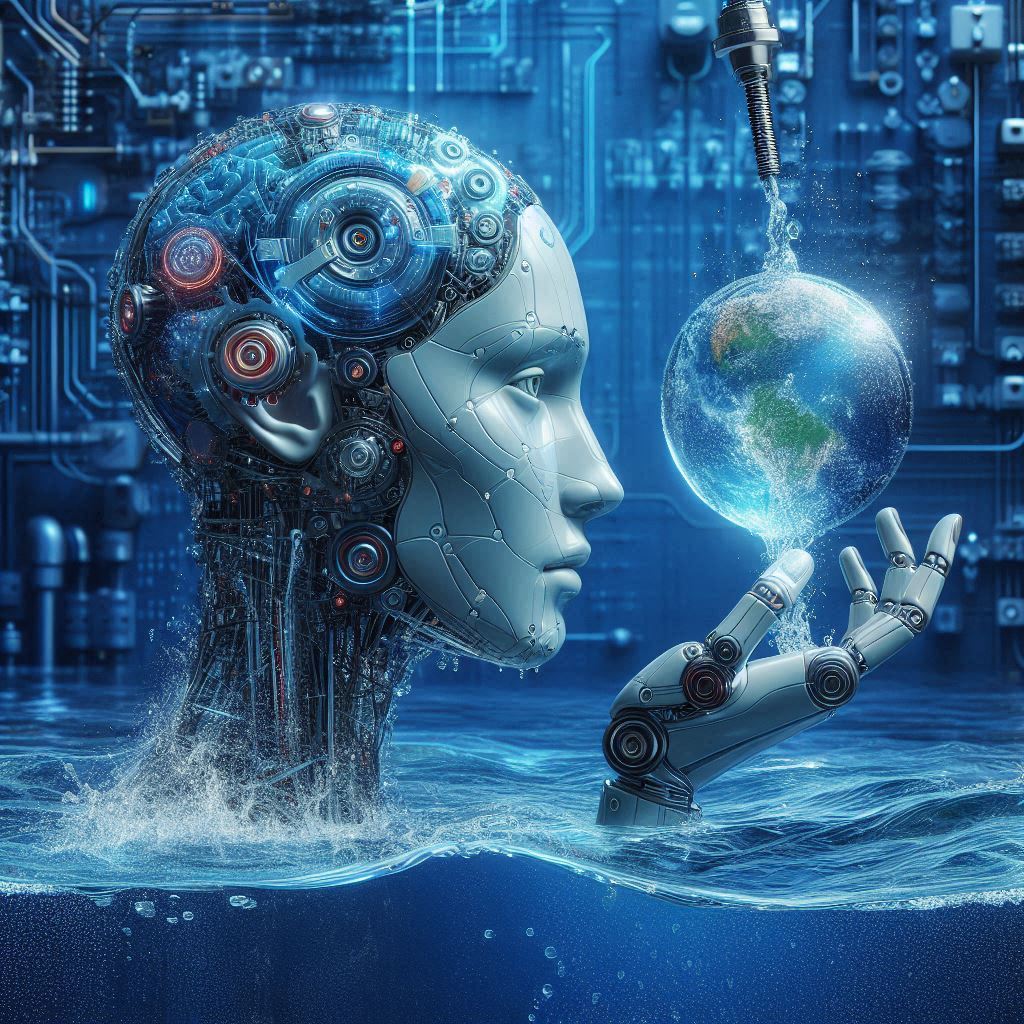The story of artificially intelligent (AI) machines taking over the world and eliminating humans is not new.
Isaac Asimov, the grandfather of science fiction, created Three Laws of for Robotics in a short story written in 1942 for his “I, Robot” series. (Yes, that’s 1942!)
Three Laws of Robotics by Isaac Asimov
- A robot may not injure a human being or, through inaction, allow a human being to come to harm.
- A robot must obey the orders given it by human beings except where such orders would conflict with the First Law.
- A robot must protect its own existence as long as such protection does not conflict with the First or Second Law.
Science fiction often envisions the ethical dilemmas that science will encounter. What does the self-driving car do when faced with crashing into another car or veering off into a crowd of people? Sometimes there are no good options.
Currently, generative AI models threaten humans in an unexpected way.
AI is thirsty for water!
- Global Annual Water Consumption:
AI’s global annual water consumption is projected to reach between 4.2 billion and 6.6 billion cubic meters (4,200 to 6,600 billion liters) by 2027. For context, this is enough to supply millions of households for a year. - Data Center Cooling:
Data centers use water-intensive cooling systems to prevent servers from overheating. On average, a data center can evaporate about 1–9 liters (0.26–2.4 gallons) of water per kilowatt-hour (kWh) of server energy consumed. A single large data center (100 megawatts) can use about 2 million liters of water per day, equivalent to the daily water usage of approximately 6,500 households - Per AI Interaction:
Each string of AI prompts (roughly 20–50 prompts) can consume about 500 milliliters (16 ounces) of water for cooling, meaning that every few interactions with a tool like ChatGPT uses about as much water as a typical water bottle. - AI Model Training:
Training large models is especially water-intensive. For example, training GPT-3 consumed hundreds of thousands of liters of fresh water—about 85,000 gallons (over 320,000 liters).
With the explosion of AI deployment in multiple industries, AI is thirsty for water and competing with the needs of people for water across the globe, especially in areas where fresh water is already scarce.
This is a story of unseen consequences. As water becomes a scarce resource and an escalating cost for AI companies, new technologies to make water usage more efficient are being developed. The struggle will continue as companies like Microsoft and Google have increased their water demands more than 20% in a year.
The advances of AI are dramatic and nothing short of amazing, but there are ethical dilemmas on the road ahead that are no longer in the realm of science fiction. Perhaps we can look to the science fiction writers of the past for inspiration and the science writers of the present for solutions.
Resources
- Forbes: AI Is Accelerating the Loss of Our Scarcest Natural Resource: Water
- University of Illinois: AI’s Challenging Waters
- Veolia: Artificial Intelligence is Using a Ton of Water. Here’s How to Be More Resourceful
- Solveo: AI’s hidden thirst or how much water does Artificial Intelligence really drink?
